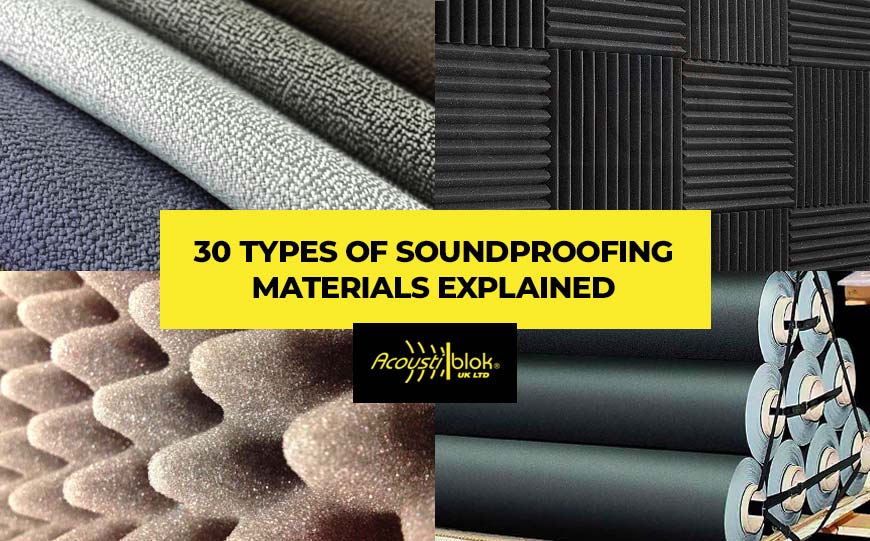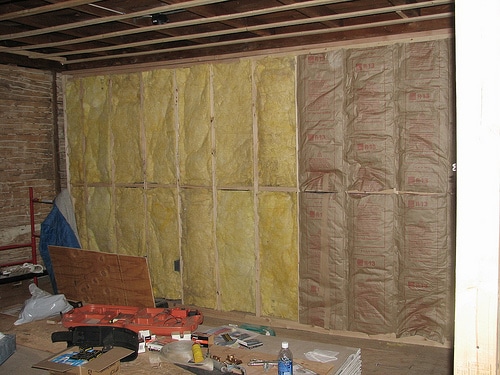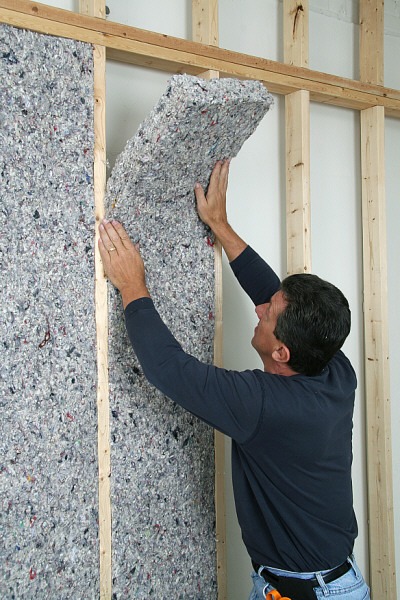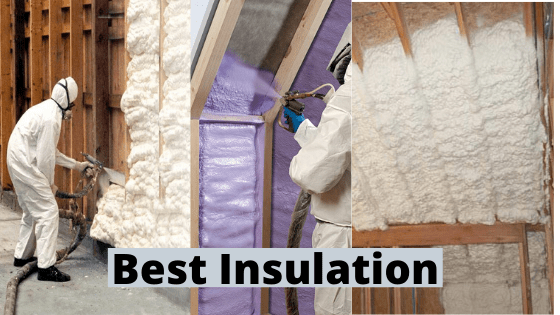Featured
Table of Contents
- – How To Soundproof A Room In 3 Steps
- –
- – Best Soundproof Insulation Materials
- – Understanding Basics Of Sound Transmissi...
- – STCs to Consider in Your Home
- – Insulation Noise Reduction
- – Types and applications of soundproofing
- – Different Types Of Insulation
- – Fiberglass insulation
- – MultiPurpose transmission Classes (STCs), u...
- – Batt Insulation
- – Foam Spray Insulation
- – Insulation
- – Roxul Rockwool Acoustical Mineral Wool I...
- – Acoustimac Eco Cellulose Insulation
- – Foam It Green Spray-Foam Insulation
- – Mineral Wool vs Fiberglass Insulation Bo...
- – Mineral Wool Panels vs Fiberglass Panels
- – Cellulose Vs Fiberglass Batts, Panels
- – Cellulose vs Roxul Rockwool
- – Cellulose vs. Spray Foam
- – Roxul Rockboard panels vs Rigid Foam
- – The benefits of soundproofing insulation
- – Move Electrical Boxes
- – Seal the boxes
- – Insulate Your Walls
- – Doors
- – Absorption
- – Insulation made with mineral wool
- – Cellulose Insulation
- – The Best Insulation For Soundproofing: How To ...
- – 7 Cheap And Effective Methods For Soundproofin...
- – How To Soundproof Your Room With The Best Insu...
- – Which Type Of Insulation Is The Best For Sound...
- – The #1 Solution For Stopping Unwanted Noise So...
- – Insulation For Soundproofing: Which Is The Be...
How To Soundproof A Room In 3 Steps
Soundproofing a ceiling can help to reduce sound entering your home. A ceiling soundproofing project is easy and inexpensive. You can choose from a range of soundproofing materials such as foam tiles or acoustic panels. These are the best tips for installing these products.
Best Soundproof Insulation Materials
There are many soundproof insulation options that you can use to insulate your office or home. However, not all of these materials are created equal. While some materials may block out more noise than others, they may also be less effective at blocking it.
Noise pollution has become a significant problem in many major cities around the world.
This mineral wool fiberglass blown-in cellulose spray foam insulation board is a great option to your home. It is soundproofing, heat retention, and protects walls from moisture damage.
We are exposed to thousands upon thousands of noises every day in our homes. Acoustic insulation materials can help improve our comfort.
Airborne sounds, sound waves that travel through an airspace, are sounds like vehicles, radios, conversations, and dogs barking. Toys and glass can also fall on the ground, and people may walk on wooden floors. Flanking noises travel through walls and ceilings, under floors, and between floors. It can be hard to control them.
Understanding Basics Of Sound Transmission
Sound is a wave of pressure that travels through the air. It can be heard by the human ear but cannot be seen or felt. Sound waves travel at different speeds based on their wavelength (the ).
The distance they are from each other determines the frequency of sound waves. However, the closer they are the lower the frequency. Between 17 mm and 17 meters, sound waves can be heard. You can also determine how loud they will sound by other factors than the distance between speakers. The louder they will sound, the larger the room and the more people there are,
Hertz is the unit of frequency. Hertz is the unit of frequency.
Sound waves can be controlled by materials that absorb or block their transmission.
A calm home will average 40dB. Noisy homes will have a level over 100dB. Material will be more effective when the number is greater.
STCs to Consider in Your Home
A quiet home should receive a higher rating than STC40. Ceilings, walls, and floors should be rated at STC50 or higher. STC 52 is the minimum rating required for bedrooms. STC 56 should be for bathrooms and living areas. STC 60 should refer to kitchens.
Insulation Noise Reduction
Before you start construction, soundproof your home. This involves adding more layers to the drywall so that the sound waves are absorbed by the walls. We have some amazing tips for soundproofing your house if you are new to construction.
There are many ways to ensure you have a high-quality soundproofing job. But what is sound insulation? It is an important feature for any home or business because it helps to keep noise levels down as well as reduce vibrations throughout the building. Living in homes without soundproofing can lead to problems from vibrations caused by running motors, fans, and vibrating appliances, as well music played on radios and televisions.
Sound Dampening
Acoustic insulation is 80. Acoustic insulation is 80.
Insulation improves the value and energy efficiency of your home. Drywall reduces noise in your home.
The wall is supported by steel beams. Sound insulation increases by 49% when 1" is replaced with 5/8".
Types and applications of soundproofing
On the other side, soundproofing is dominated primarily by two types of products: fiberglass and drywall. Although drywall is mainly used in older homes it can still be a great choice for homeowners who wish to improve their home's energy efficiency. Fiberglass insulation is more in demand because of its ability lower noise levels and improve energy efficiency.
Insulation can be either acoustic (or mechanical). Mechanical insulation includes foam, metal studs, steel beams and other materials that are placed inside walls or ceilings to absorb sound waves and prevent vibrations from reaching sensitive areas like floors, windowsills, etc. It sounds easy enough, just add insulation! How do you choose the right type?
Acoustic sound-absorbing material can be used to quieten walls, floors, and ceilings. Because they are porous, light, and trap sound waves,
Sound blockers are typically thick, heavy materials which reflect sound waves and prevent them from entering or leaving spaces. They can be found in ceilings and walls as well as doorways. Sound dampers are used to reduce vibrations that transfer through walls. They don’t transmit as much sound.
Noise transfer from different rooms can be reduced by using isolation walls. Clips may also be used.
Different Types Of Insulation
Using mineral wool as insulation is possible. Being porous and dense, it absorbs both vibrations and sound from impact.
Fiberglass is an insulation type that is used for insulate homes.
Spray foam insulation for sound control is a polyurethane type that is sprayed onto walls to insulate. It reduces noise by upto 95%
Extruded polyester is used to produce both blue and pink frosted foam boards. ISO panels are better insulation that either blue or pink foam boards.
A section of polystyrene is used to reduce noise levels in a space.
Fiberglass insulation
So which insulation type is best? This depends on your needs, climate, and the features that you desire in your new home. It also depends on what noise-reducing products are available for sale at this time. As companies try to improve their products, the soundproofing market has become more competitive. Manufacturers are able to use less material, but still produce quality products.
Electronic Sound Absorption and Cancellation (ESAC), systems convert electrical energy into acoustic, which is then transmitted through walls or ceilings to the originating sound source.
Fiberglass insulation is made from melting plastic and spinning the strands into long strands. Fiberglass insulation insulates homes by retaining heat in winter and allowing cold air to escape.
Thicker batts can decrease the STC approximately by 1 point. Also, sound waves reflect back to their source more often which may increase overall STC.
Fiberglass insulation are flexible. Fiberglass is rigid. The NRC rating for is 0.85. R11, R19, and R11 are 0.95.
Fiberglass insulation can be very effective at keeping heat inside your house.
Fiberglass Batts can insulate walls ceilings and roofs. Rigid batts can also be used around ductwork and walls to reduce noise transmission and echos.
Owens Corning's pink unfaced insulation rolls measure 23" x39". They can be attached between beams, truss or studs. It adds 6 inches of insulation and has an R19 value. However, it can be mold and moisture-sensitive. If not compressed, it can improve sound absorption on floors and walls.
Owens-Corning 703 is a lightweight acoustic insulation that can be used as ceilings, walls and hanging frames. It reduces sound by upto 80% when compared with drywall. It is available in two thicknesses: 2" or 4". It should be covered in an acoustical fabric, to keep fibers from flying.
Owens Corning 2" thick soundproofing insulations have a density of 10.3 pounds/ft3 with an additional STC of 18. They enhance the overall sound.
MultiPurpose transmission Classes (STCs), upto 53. It has an insulation value 1.0. Higher frequencies are better than lower ones. However, low frequency noises remain a concern.
Mineral Wool
You can find many kinds of mineral wool insulation.
Fiberglas insulation is more dense and has a stiffer structure that mineral wool insulation. It is also less likely to slouch and create noise transfer zones than fiberglas. This also stops sound transmission.
Acoustic tile helps reduce sound and echo.
Batt Insulation
Batt insulation is a type that wraps around a wall. It is typically made from fiberglass, although some varieties use other materials like polyester. Depending on the size of your space, you can find batt insulation in different thicknesses.
The batt insulation arrives in a rectangular format so that it can be installed easily. A base material could affect your product's capability to soundproof or act as a thermal barriers or soundproofing agents.
Fiber glass is used to make batt insulation. It's strong. With a saw or a serrated blade, you can make holes for electrical boxes. Protective eyewear and a mouth mask are recommended for fiberglass cutting.
Mineral wool insulation is very popular because it is quick and easy to install.
Foam Spray Insulation
Polyurethane foam spray is great for insulation in unusual-shaped areas. However, it's most commonly used to insulate attics which are not completed.
Liquid Foam Insulation can be applied to walls by spraying it on. This insulation is used to insulate buildings.
While liquid foam insulation doesn't provide fireproofing, it does offer some thermal resistance. It may be necessary to add materials to it in order to comply with code.
Insulation
Blowed insulation looks almost identical when poured. However, it can spill out and will not work in new wall building.
Blown insulation refers to insulation used to insulate homes.
Roxul Rockwool Acoustical Mineral Wool Insulation
Many manufacturers use rockwool to soundproof their products. They can create bass traps and acoustic panels using it.
You can buy six-pound units of rock wool acoustic wool insulation. It's great for acoustic insulation and as an economical, water repelling fire class. It is hydrophobic. Although the panels I have linked are 2 inch thick, they come in 3 inch or 4 inch options. However, you can get battys that are 1 inch thick.
Rockwool insulation is a type that is made from fiberglass.
Rockwool provides high quality insulation. They are fireproof and waterproof.
Acoustimac Eco Cellulose Insulation
This ecocellulose insulation makes a great selection.
It is made from recycled materials.
These panels will protect your home from high-frequency sounds such sirens, explosions and gunshots. The panels will not protect you from low frequency noises such car engines and footsteps.
The fire rating of Acoustic Insulations is Class A.
Foam It Green Spray-Foam Insulation
This foam insulation is used for sealing or insuring areas. It can be applied in less than five seconds.
Insulates and seals out the air. Insulation thickness of 1 inch. Everything you need will be found in the 120 lb package. You should consider this if shipping costs are affected by the product's weight. The foam delivery cans are applied under pressure. You will also get the following:
This 15-foot hose comes with an application gun, 10 fan spray tips, and 3 fan spray tip. Light green indicates you did it right.
This foam may be used to insulate homes. Instead, use a slower rising foam.
How to install soundproof Insulation.
Mineral Wool vs Fiberglass Insulation Boots
Although fiberglass batts tend to be more expensive, mineral wool batts have much higher efficiency. Fiberglass can be less cost-effective, but they absorb more sound.
Mineral Wool Panels vs Fiberglass Panels
Panels made of mineral wool can have an STC range of 45 to 52 with an NRR of 0.95 to 0.99. Both can be used to absorb sound and reverberations.
Cellulose Vs Fiberglass Batts, Panels
Bats are mammals that fly around looking out for insects.
Cellulose vs Roxul Rockwool
Cellulose, which is a type of fiber is made up long chains of sugar molecules. They also have an NRF rating rating of 1.1. It is an excellent sound absorber material.
Cellulose vs. Spray Foam
Cellulose is available in an STP range from 44 to 64, and an NPR range between 0.8 and 0.99.
Roxul Rockboard panels vs Rigid Foam
Rigid foam can be used to make insulation and soundproofing materials.
Roxul Rockboards can absorb sound and reverberation.
The benefits of soundproofing insulation
Because noise can be distracting, it is important to reduce it. Mineral wool insulation can be used to block noise from the outside and inside. This can reduce distractions during work.
The mineral wool won't absorb heat nor cold and is therefore great for soundproofing homes. Homeowners believe that it will increase home value.
Move Electrical Boxes
It is crucial that electrical boxes be mounted in such a way that they can be separated only by one wall-stud. This permits you to later use the 5/8′′ and 1/2′′ resilient drywall.
Make sure your boxes are easy to reach.
Seal the boxes
Electrical boxes sealed with Acoustic sealants should be used. Silicone caulks should be used to seal cracks in the walls.
Insulate Your Walls
Fiberglass batting must be placed into cavities. Caution: Gloves, masks, eye protection and gloves are not recommended when cutting fiberglass.
Doors
Doors should have high Sound Transmission Class ratings. You could lose some of its advantages if you spend too many hours insulating walls.
Solid-core wooden doors have a standard threshold of 28. Acoustic timber doors have a threshold between 30- and 50. You should look for a supplier who specializes in commercial construction.
Absorption
Acoustic soundproofing is an important part of any building. Combining all soundproofing techniques together can provide better results.
Soundproofing plays an important role in any building. Some insulations work better than others.
Insulation made with mineral wool
Mineral wool is made from either rock or glass fibers. It is used to insulate homes, buildings, and other structures. It is resistant against fires and does NOT absorb moisture.
Cellulose Insulation
Its low density makes it easy to cut and place. Cellulose insulation is light and compact, meaning it does not weigh much. When used as panels or batts for insulation, cellulose has a very high R value at approximately 4/inches (R-4). It can be used as insulation in attics, walls, ceilings, and other areas of buildings and homes.
Cellulose insulation is a great soundproofing material. It absorbs noise well, and does not absorb heat or cold. Cellulose insulation is made of recycled paper products like newspaper and cardboard boxes. The fibers are then made into strands that are then compressed into pellets. This produces cellulose fiberglass that can be mold into any shape.
Cellulose insulation is a type of plant fiber used in wall cavities. Their ability to trap noise and air makes them more effective in noise insulation.
Namely, you'll wish to keep in mind where all of the assorted electric boxes and cords are and also just how much area they take up. Soundproofing TPEditor.com. That will enable you to tweak the batt prior to you put it right into the wall surfaces (www.TPEditor - www.TPEditor.com.com). Step 3: Gear Up, One more thing prior to you can take care of insulation make certain you have actually got all the devices you need: Old apparel.
The Best Insulation For Soundproofing: How To Silence Your Home Or Office


A safety mask, gloves, and also possibly also function goggles. Most of the materials I chatted regarding can aggravate the skin, eyes, and also also lungs. So secure yourself before you begin installing the insulation. An utility blade for reducing the batt insulation down to size and suitable it around electrical boxes.
7 Cheap And Effective Methods For Soundproofing Your Home
Step 4: Cut the Insulation, Currently that you have your equipment, you can handle the insulation - www.TPEditor.com. Nevertheless, if you aren't preparing on setting up the insulation as quickly as you obtain it, don't unpack it - www.TPEditor.com - Soundproofing TPEditor.com. TPEditor.com (TpEditor.com). Fiberglass, specifically, may aggravate people with breathing problems, as it launches tiny particles into the air when you manage it (Soundproofing TPEditor.com).
How To Soundproof Your Room With The Best Insulation
As I have actually stated, the insulation will probably be as broad as the wall surface studs, so you'll just have to reduce the height you need. You can put the batts in as you reduced them, and also removed the items for electrical boxes as needed. Step 5: Place in the Setup, I actually choose doing this part with a number of assistants (TpEditor.com).
Which Type Of Insulation Is The Best For Soundproofing?

That is, if you bought insulation that has a clear distinction between the front as well as the back side - TPEditor.com. Press and also tug the material so that it loads out the entire space.
The #1 Solution For Stopping Unwanted Noise Sound Proof Insulation

Step 6: Cover It Up With Drywall, If you have actually installed everything you desired inside the walls, you'll most likely desire to cover points up at this point. www.TPEditor.com. Which ones do you select?
Insulation For Soundproofing: Which Is The Best Type For You?
Which insulation type is best for soundproofing
Fiberglass insulation
What R-value is best for soundproofing?
If someone asks which R-value soundproof material is the best, then R-13 to R-19 would be the most suitable. R-13 to R-23, on the other hand are common for outside walls.
Does a higher R value mean more soundproofing
R-values that are higher indicate more efficient insulation. All insulation that you use to conserve energy can help soundproof your walls. But, for noise-dampening effects that are significant, you'll need additional insulation.
How effective is insulation in soundproofing?
Foam insulation can deaden sound by up to 80 percent, but you will still get some sound transmission. RetroFoam of Michigan is a company that has been helping homeowners in Michigan dampen sound sound in their homes and pole barns since 2002. This allows us to understand how sound transmission works.
If you're dealing with the kitchen area, drywall may be a much better fit. Alternatively, if you're building your washroom, drywall would certainly be the means to go. www.TPEditor.com. Added Actions You Can Take to Shield Wall Surfaces and also Ceilings, On the various other hand, if you make a decision that insulation as well as drywall alone will not suffice, there are various other steps you can take while you have the wall surface studs subjected.
Table of Contents
- – How To Soundproof A Room In 3 Steps
- –
- – Best Soundproof Insulation Materials
- – Understanding Basics Of Sound Transmissi...
- – STCs to Consider in Your Home
- – Insulation Noise Reduction
- – Types and applications of soundproofing
- – Different Types Of Insulation
- – Fiberglass insulation
- – MultiPurpose transmission Classes (STCs), u...
- – Batt Insulation
- – Foam Spray Insulation
- – Insulation
- – Roxul Rockwool Acoustical Mineral Wool I...
- – Acoustimac Eco Cellulose Insulation
- – Foam It Green Spray-Foam Insulation
- – Mineral Wool vs Fiberglass Insulation Bo...
- – Mineral Wool Panels vs Fiberglass Panels
- – Cellulose Vs Fiberglass Batts, Panels
- – Cellulose vs Roxul Rockwool
- – Cellulose vs. Spray Foam
- – Roxul Rockboard panels vs Rigid Foam
- – The benefits of soundproofing insulation
- – Move Electrical Boxes
- – Seal the boxes
- – Insulate Your Walls
- – Doors
- – Absorption
- – Insulation made with mineral wool
- – Cellulose Insulation
- – The Best Insulation For Soundproofing: How To ...
- – 7 Cheap And Effective Methods For Soundproofin...
- – How To Soundproof Your Room With The Best Insu...
- – Which Type Of Insulation Is The Best For Sound...
- – The #1 Solution For Stopping Unwanted Noise So...
- – Insulation For Soundproofing: Which Is The Be...
Latest Posts
The Key Takeaways
How to Master the Art of Flossing
What Research Says About Daily Flossing
More
Latest Posts
The Key Takeaways
How to Master the Art of Flossing
What Research Says About Daily Flossing